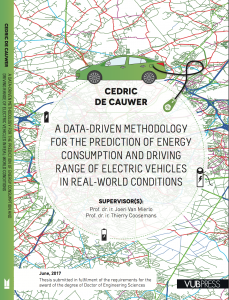
Electric vehicles have great potential to reduce the global greenhouse gas emissions and the environmental impact of transportation. However, there are a number of barriers that hold back widespread adoption of electric vehicles. A limited driving range and limited (fast) charging infrastructure lead to the phenomenon of range anxiety, which, together with a high purchase price, curb the enthusiasm of consumers towards the adoption of this emerging technology. Accurate range estimation and energy-efficient routing therefore contribute to the eradication of range-anxiety and to a positive perception of electric vehicles by consumers. The driving range of electric vehicles depends on the remaining battery capacity as well as on the energy consumption during operation. The energy consumption itself has many interrelated influencing factors which are mostly vehicle-, road-, and driver-related. Additional external conditions such as weather and traffic can influence or impose a driving behavior and trigger the use of auxiliary energy consumers such as heating. This PhD research focuses on predicting the energy consumption of electric vehicles during operation, in real-world conditions. A new methodology is developed using model-based data analytics on large data volumes (Big Data). The methodology uses real-world energy consumption- and driving data, together with road and weather information, to predict the energy consumption over a given trajectory and allows to propose energy-efficient routes. The developed methodology has two main parts: an energy estimation model and a speed profile prediction. This integrated model differentiates the energy consumption according to the road characteristics and other external conditions per road segment, and has shown to have a better accuracy than a model that uses average consumption values. Moreover, this model allows to calculate energy-efficient alternative routes using variants of well-established shortest path algorithms. The data-driven approach ensures that results reflect real-world conditions, and allows for the developed model to be easily updated over time to adjust to changing conditions.
